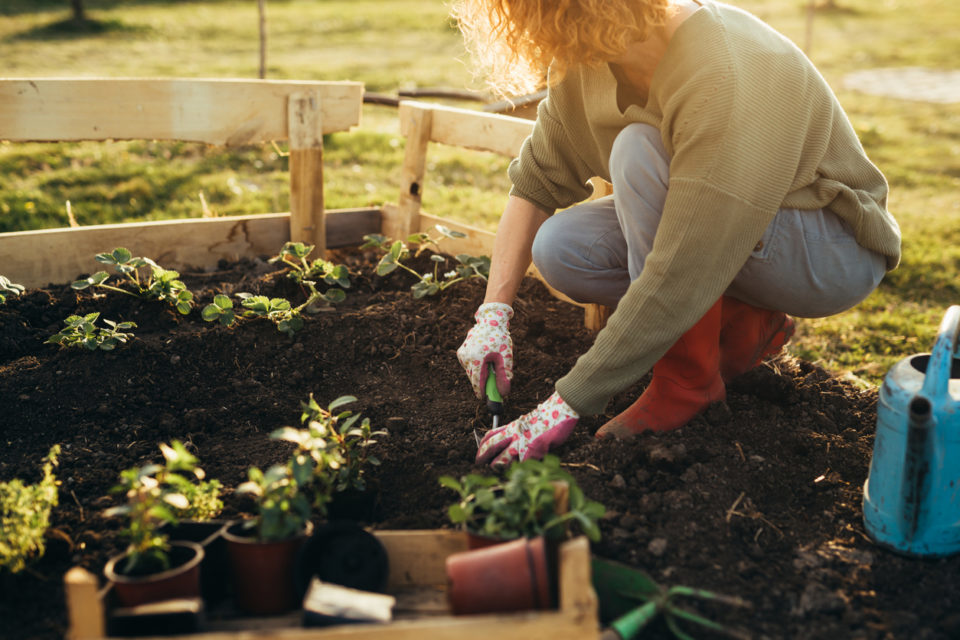
Starting a garden can be an incredibly fulfilling and rewarding experience. From planting your first seed to watching your plants grow to seeing the first flower blossom or eventually harvesting your own fruits and vegetables, the process is both satisfying and empowering. Not only do you get to enjoy the fruits of your labor, but you also gain a greater appreciation for the natural world around you. Gardening can also be a great way to relieve stress and connect with nature. If gardening is something you want to try your hand at, check out this step-by-step guide from Better Homes & Garden.
There are three phases to starting a garden and each one has a few steps involved. Keep reading for a quick to what each one is.
Phase 1: Planning Your Garden
Step 1: First things first, decide what you want in your garden. Are you planning a colorful garden full of fragrant blossoms or do you want to plant an herb garden so you’ll have fresh herbs to cook with? What about vegetables or fruit? You can even do some combination of each. Just remember that each type requires different levels of care, space, and time. Do your research and decide what you’re willing to commit to.
Step 2: Pick the location of your garden. Different types of plants have different sun requirements. Find a relatively flat spot in your yard that gets enough sun for the type of plants you intend to grow. If you don’t have a particularly sunny area in your yard, you might have to adjust your plant choices.
Phase 2: Prepping Your Garden
Step 1: First, clear the ground by getting rid of all the weeds, grass, and sod, if you plan to plant right away. If you’re planning a long-term project, you can use what’s called a lasagna method. Clear the ground then layer 3 inches of compost over a layer of newspaper. In a few months, the ground will be weed and grass free with rich soil.
Step 2: Test your soil and make improvements. Have your county cooperative office test your soil. You’ll get your results back in about two weeks and they’ll include details about the nutrients your soil lacks. With that information, you can make adjustments that can give your soil a boost. Most of the time that means adding organic matter to your garden area. Depending on how big your garden is you may have to get a large amount.
Step 3: Prep your planting beds. Loosen the soil in your planting bed to help the roots grow easily and get more access to the water the plant needs to thrive.
Step 4: Pick your plants. It might seem like this step is a little late in the process, but you should pick the plants you put in your garden based on what will thrive best. Once you know the soil conditions and how much sunlight your plants will get you can make a more informed decision.
You might also like: Attend The Barkitecture Festival
Phase 3: Planting and Maintaining Your Garden
Step 1: Now comes the fun part – start planning your garden. For most plants, you should wait until at least early spring before you start planting unless you live in a particularly warm environment. Check when the last frost date is for your area and plant your garden a few days or weeks afterward.
Step 2: Water your plants. If you start with seedlings, make sure to water your garden every day, but if you are using transplants you can use an every-other-day watering schedule instead. Never allow your plants to completely dry out. If you’re not sure if it’s time to water again, feel the soil about three to four inches below the surface, if it’s dry, your plants are probably a little parched.
Step 3: To protect your garden from weeds and help it maintain moisture, cover the soil with a few inches of mulch.
Step 4: Keep up with gardening chores like regularly watering your plants, pulling weeds, and purging the garden of dead or diseased vegetation.
If you need a vehicle that can haul all of your garden supplies, consider purchasing a Hyundai Santa Cruz from Red McCombs Superior Hyundai. Happy gardening!
Disclaimer: The stock image is being used for illustrative purposes only, and it is not a direct representation of the business, recipe, or activity listed. Any person depicted in the stock image is a model.
